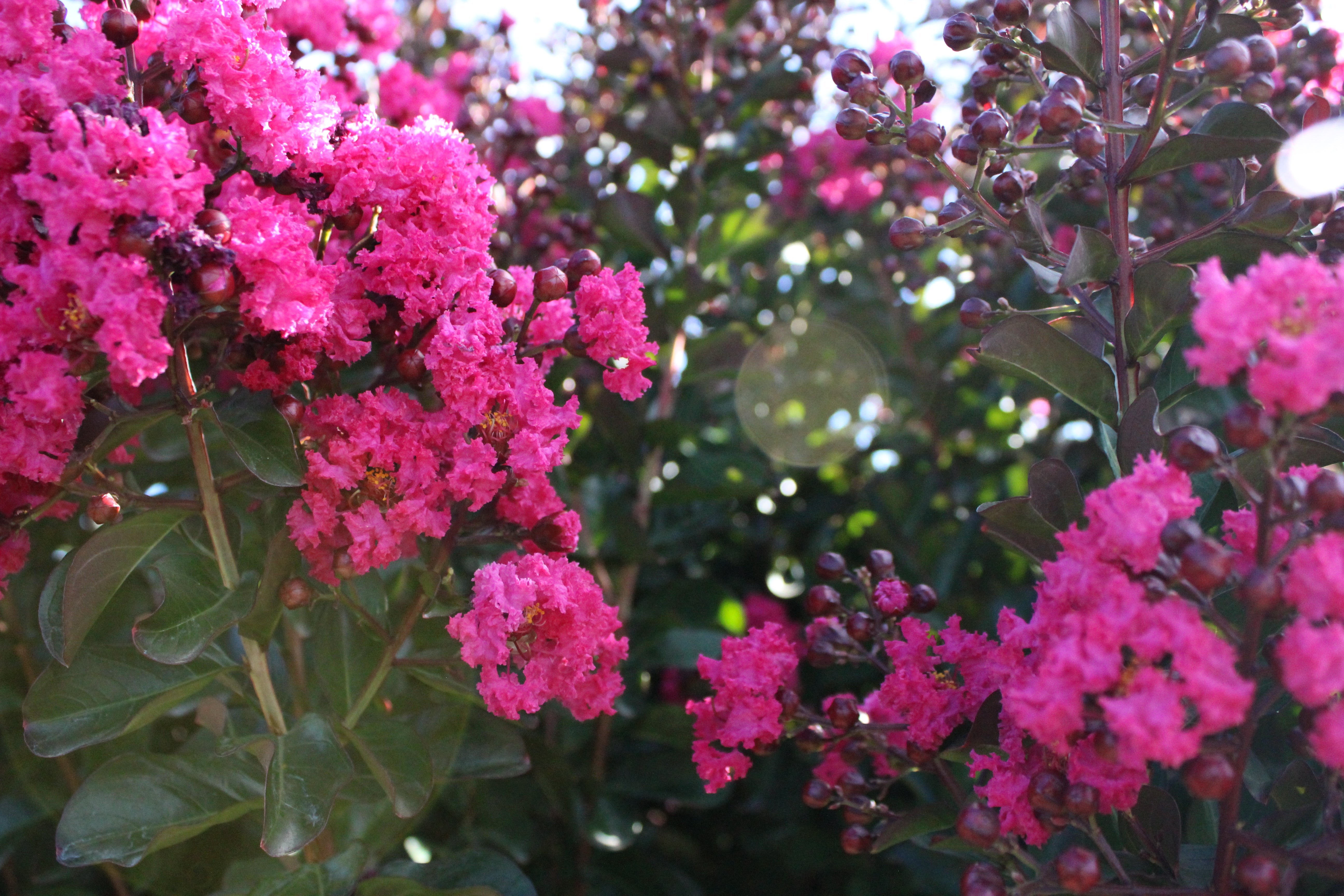Crape myrtles, species Lagerstroemia, thrive and bloom well in heat and are low maintenance. The unusually hot weather we are experiencing in the Pacific Northwest means early blooms. Usually blooming in mid-August, Crape myrtles will emerge from their dormancy and begin showing their first summer blooms, giving us all more time to admire their beauty and wide range of colors. With its blooms and attractive bark, this flowering tree will delight year-round.

Colorful Blooms
You can have many different colors from white, lavender, purple, red, to shades of pink. The more sun the tree receives, the more blooms it will show off.
The History Behind Crape Myrtles
Jack Bigej, Owner, and CEO, brought them into Oregon 35 years ago and says that they have “been around since dirt was young.” They are indigenous to the south because of the hot and moist climate. Over the years a professor at Oklahoma State developed varieties not prone to powdery mildew and can endure harder winters like we experience in Oregon.

Al’s only carries varieties that we have tested and tried in our own yards. Jack likes to say that we like to “take them and walk before we can really run.” In Jack’s experience over the years, they have really done great. The hot weather we have been having has pushed up the bloom time, normally they bloom mid to late August, but they are budding now in the middle of July!
Growing and Maintenance
Crape myrtles can grow in any soil type. The location site you choose should be in full or partial sun for a minimum of six hours per day. They love the bright sunlight. Make a hole in the center of the potting soil mix or neutral, slightly acidic soil, pushing down about 10" deep. Pack the soil firmly around the stem. Water the plant thoroughly after planting. After watering, you may have to add a little more soil around the plant and tap soil down with your foot. If you choose, stake the trees so they will stand upright; it is not necessary. Leave the stakes up for six months.
Place a substantial amount (3-6 inches) of mulch around the plant. Water 2-3 times per week in the spring/summer, especially if the weather is dry. Crape myrtles tend not to have many pest issues, but they are susceptible to powdery mildew, sooty mold, and other fungal infections. Prevention is the best way to deal with these issues. To prevent these issues from arising, water the roots rather than the foliage and allow your tree to have plenty of space to air dry after heavy rain. Apply a general fungicide annual treatment to reduce the risk of an infected plant.
The heat is here but it does bring the color. Enjoy the early blooms!
New varieties are still developing and it is fun to see what new, exciting colors are popping out! They are also developing darker foliage that looks amazing against the vibrant colors of the blooms. Keep an eye out for exciting things to come!


My crepe myrtle has leaves but no flowers. This one s its first summer so I need to know if it will bloom next year
My crepe myrtle is a “Charlie Brown tree”. About 4 yrs old. Gets East and South sun. Near a year round creek.Is very tall and skinny. Blooms only on top branches. Should I prune? When?
Bought 2 crepe myrtle from you last year and they did not make it through the winter … they are just sticks ? Why ??
What fertilizer and what time of year to use it for best results. Thank you
Crape Myrtles are beautiful! We purchased three of them several years ago when Al’s had Crape Myrtle celebrations. We trained our bushes into trees. What a treat as we drive down our street to see the flashing color of our trees. We have even had someone stop to ask what kind of trees we had blooming.
Leave a comment